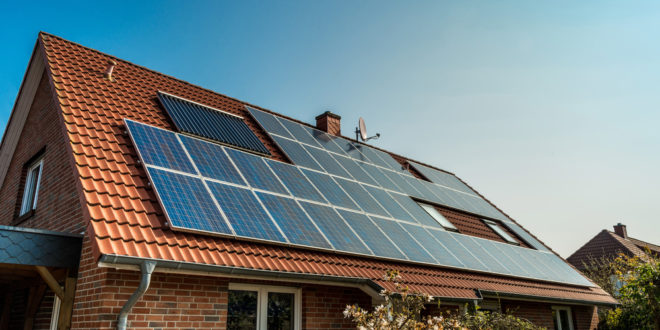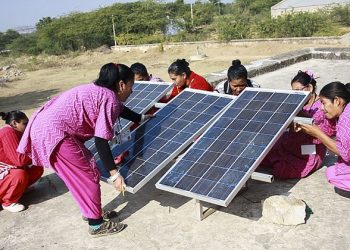As people grow more conscious of the negative consequences of fossil fuels, they’re considering cleaner energy sources. The negative effects of carbon emissions on ecosystems and the broader environment are well documented. That is why governments and organizations encourage people to embrace more sustainable energy sources like solar.
Solar is currently one of the most popular renewable energy sources. Even though most people still rely on grid power, some homeowners are transitioning to solar energy. Given that solar technology is becoming more affordable and accessible, more people are expected to follow suit. However, solar systems are still expensive at present. Despite the substantial capital investment needed to build a solar system, solar provides long-term benefits that may surpass the costs.

Solar makes sense as a long-term investment because it is future-proof. If you’re investing in solar, consider partnering with a reputable service provider and installer. Preferably, your service provider should be local because they’ll know the codes and permits required to complete installation. For example, it may be worthwhile to research Washington solar cost breakdown if you live in that area. Then after gathering quotes from different service providers, you make an informed choice. That said, here’s a detailed comparison of traditional and solar energy.
The Benefits And Costs Of Solar Energy
Benefits Of Solar Energy
- Requires Less Maintenance
Like every other component of your home, a solar system requires upkeep. Maintaining them is easier than you might think. You merely need to make sure they’re constantly clean. Nevertheless, having regular inspections could help to keep your system’s efficiency and durability in the long run.
Because solar energy is renewable, it can never be depleted. As long as the sun shines, it emits radiation, which is light energy. Since sunshine is free, you don’t have to worry about disturbing someone or the environment using solar energy.
Investing in a solar system may entitle you to tax credits from your local, state, or federal government. Some counties or governments wish to encourage individuals to adopt a greener lifestyle. They do this by providing tax credits for solar installations. This option, however, is only available in some states or regions. So, research to see if you qualify for a solar tax credit where you live.
Because solar energy is renewable, it’s environmentally friendly. Solar panels don’t release any harmful gases into the atmosphere. So, it’s a safe power source.
High electricity bills are a strong motivator for people to invest in solar systems. Because you are no longer dependent on the grid, solar cuts your electricity expenses. You might considerably cut your monthly energy bill even if you have a hybrid system. However, your savings will be determined by the size and type of system you have.
Costs Of Solar Energy
It is, without a doubt, the most significant drawback of solar energy to date. Every aspect of investing in solar is typically expensive. It includes the expenses of supplies, equipment, and installation. For example, because solar systems are affected by weather, users must invest in battery storage to ensure a continuous power supply. Solar batteries are charged throughout the day for usage at night. But, while batteries are an excellent option, they are quite expensive.
Therefore, because of the substantial financial investment needed, most individuals never consider committing to the shift to solar energy. However, if you are determined to invest in a solar system, you can obtain a loan. Alternatively, you can rent out the solar system. But it does not change the fact that solar systems are expensive.
Intermittency is one of the most serious issues with solar power. Solar panels can only harvest solar energy while the sun is shining. It is a major inconvenience because it means you’ll only be able to use the panels during the day. Even on cloudy and rainy days, you can utilize the system. However, the system’s efficiency will suffer immensely.
Even though solar panels are recyclable due to their glass construction, the system still uses electrical components that may hurt the environment. The raw materials and substances used to make solar system components leave a carbon footprint. Take, for example, the use of batteries. While batteries are essential, they contain potentially hazardous elements such as lithium, mercury, and lead, which can cause contamination if they are not properly disposed of.
Solar energy necessitates that you create space to lay the solar panels. Solar systems need a lot of space to absorb the sun’s rays more effectively. Modern solar panels have gotten more efficient, but they can still improve. So, if you want to create solar energy on a huge scale, you’ll need a lot of land to put your solar panels on.
Even though solar systems are getting more efficient, producing large amounts of power with current technology is challenging. You would require a large area of land to generate a significant amount of solar energy. Compared to solar systems, power generators can produce significantly more power. While there is plenty of light energy, no existing technology can fully harness the sun’s power. Solar technology still has a long way to go in terms of obtaining great efficiency.
If you buy a solar system and choose to relocate, it will be hard to carry the system with you. You’re likely to leave the system at home. Therefore, a semi-permanence comes with investing in a solar system.
The Benefits And Costs Of Traditional Energy
Benefits Of Traditional Energy
Traditional energy’s raw materials are quite inexpensive. It is one of the primary reasons why society continues to rely on fossil fuels. Even though they are harmful to the environment, they are significantly less expensive than solar energy. However, processing these raw materials might be costly. But returns on investment are typically decent, particularly if the plant produces a significant amount of electricity. Traditional energy benefits from years of technological development as well. Thus, the processes used to generate power are also quite efficient.
When compared to solar energy, traditional energy can create substantially more electricity. There is simply no comparison between the potential output of a hydroelectric or thermal power generator and a solar system. Solar systems are less efficient and require more improvement to achieve higher output levels. The only way to boost solar production is to acquire more land on which to array solar panels. However, compared to solar, thermal power can produce energy while taking up much less land.
Even though solar radiation is abundant, harnessing its energy is hard. However, though they’re non-renewable, fossil fuels such as coal are relatively abundant. If you want to produce more electricity, it’s only a matter of mining more coal and ramping up production. However, it’s becoming harder to over-extract natural resources like coal from the ground because of environmental policies in some areas.
Costs Of Traditional Energy
It is probably one of the main downsides of traditional energy. Carbon dioxide emissions from coal power plants devastate the earth’s protective layer. It contributes to the global warming that the Earth is experiencing. Unless global emissions are drastically decreased, the globe will continue to warm. That’s why people want to move away from using fossil fuels.
- Costly Extraction Of Raw Materials
While extracting the raw materials used to create traditional energy is not complicated, it can be expensive. There’s a lot of manpower and machinery required to extract raw materials like coal from the earth, making it costly in some parts of the world.
Traditional energy generates power from non-renewable resources. The term non-renewable implies a finite amount of these resources in the earth’s crust. Once they run out, you can’t get them back, unlike solar energy. Because of the exploitation of these non-renewable resources, they may run out sooner. But you’ll be damaging the environment in the process as well.
Trade-Offs
Solar energy is good for the environment but comes with trade-offs. Solar power is one of the least efficient renewable energy sources available in the current state of technology. As a result, producing considerable amounts of solar power is challenging. Generators are far more efficient at producing power. However, because these generators are powered by fossil fuels, producing conventional energy is unsustainable and may cause water and air pollution.
So, while there are several benefits to utilizing solar energy instead of traditional energy, solar still has a long way to go before it can replace conventional forms of energy. The world still relies heavily on fossil fuels as an energy source. The good news is that solar technology is improving and becoming more efficient. Therefore, solar technology will continue to improve.
Hopefully, as solar costs continue to fall, more individuals will decide to go solar. Nevertheless, neither of the two options – traditional or solar energy, is perfect. Choosing one implies forgoing the benefits of the other. As a result, the world can’t completely do away with traditional energy just yet.
Conclusion
Solar energy is more environmentally friendly than conventional energy sources. But solar systems are expensive. It is still conceivable for consumers to invest in hybrid systems that use grid and solar energy. You get the best of both worlds without spending too much. However, solar systems must improve efficiency to replace traditional energy completely. Thankfully, solar technology is improving gradually, and costs are falling. Eventually, many people will be able to invest in these systems.



